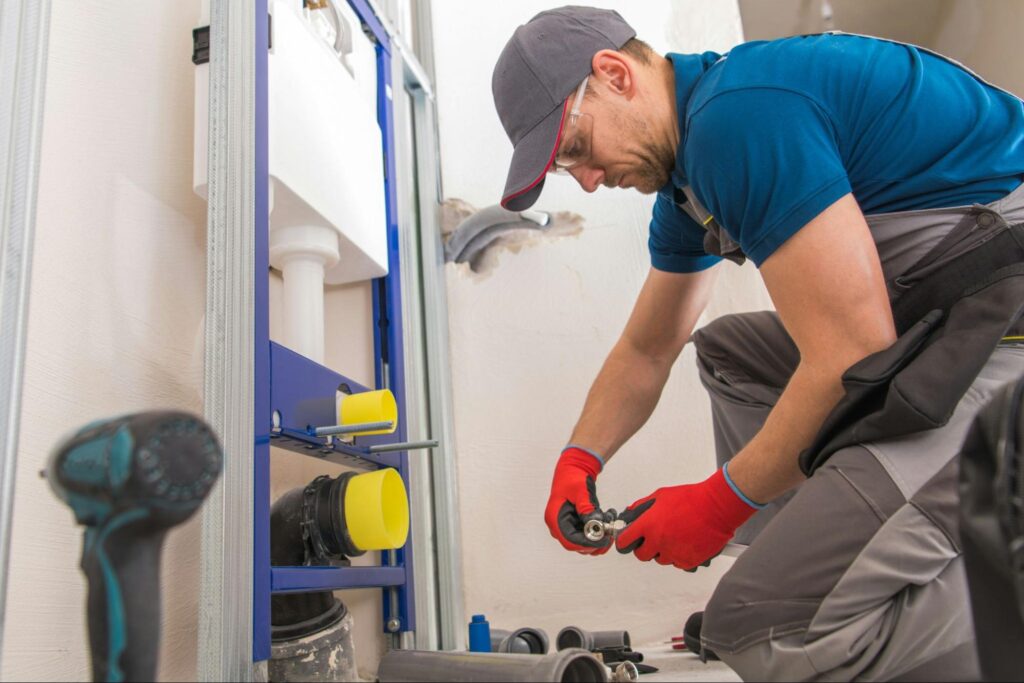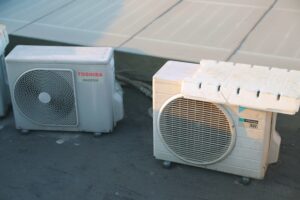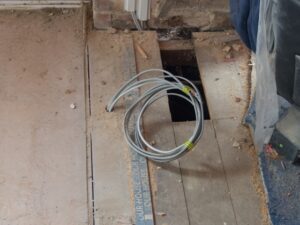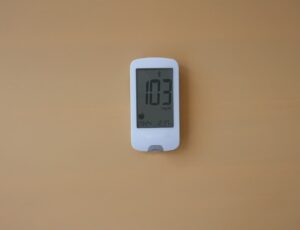Worried about basement flooding?
It’s a concern that can cause a lot of stress, but here’s the good news—sump pumps are a reliable solution to keep your home dry.
Think of it as your home’s personal defense system against water, working tirelessly to prevent floods, especially during heavy rains or snowmelt.
But installing a sump pump isn’t just about setting it up and forgetting it. Regular maintenance is key to ensuring it keeps running smoothly when you need it most. A quick check, clearing away debris, and testing the system now and then can go a long way in extending its lifespan—and save you a hefty repair bill down the road.
So, how do you ensure that your sump pump is up to the task?
That’s where we come in.
Excel Mechanical is here to offer you expert installation and ongoing maintenance services. We take pride in offering solutions that fit your specific needs and budget, whether for your home or business. When you choose us, you’re choosing peace of mind for your property.
In this blog, you’ll discover:
- Why a sump pump is essential for protecting your home from water damage.
- Step-by-step tips for a flawless installation process, from site prep to final testing.
- How to keep your sump pump in top shape with easy and effective maintenance.
Let’s break it down!
Understanding Sump Pumps
Sump pumps play a crucial role in keeping basements dry. They work to direct water away from your home, preventing flooding and water damage. Learn about the different types and components of sump pumps and understand how to choose the right size for your needs.
Types of Sump Pumps
There are two main types of sump pumps: submersible and pedestal.
Submersible pumps are placed underwater in the sump pit. They are quieter and take up less space. Pedestal pumps have a motor on a shaft above the pit and are easier to access for repairs.
Submersible pumps tend to be more powerful. They can handle larger volumes of water. Pedestal pumps, meanwhile, typically have a longer lifespan due to cooler, less humid operating conditions.
Choosing the right type depends on your basement’s size and flooding risk. You want a solution that effectively fits your space and handles the expected water load.
Components and Mechanics
Sump pumps have several key parts.
- The pump itself moves water out of the pit.
- The float switch activates the pump when water reaches a certain level.
- The check valve prevents water from flowing back into the pit after it is pumped out.
- The sump pit is the hole where water collects. An efficient pump system relies on a properly sized and installed pit.
- Battery backup systems ensure the pump works during power outages, providing added peace of mind.
Understanding these components helps ensure your system runs effectively. It is vital, especially during heavy rains or floods.
Sump Pump Capacity and Sizing
The capacity of a sump pump is measured in gallons per hour (GPH) or gallons per minute (GPM). The right capacity depends on your area’s flood risk and the size of the basement. Larger basements or high-risk areas require higher-capacity pumps.
Improper sizing can lead to inadequate water removal or unnecessary power usage. Most pumps range from 1,500 to 3,500 GPH for residential use. Head pressure, which refers to the vertical distance the pump lifts water, will also influence capacity.
Pre-Installation Preparation
Before installing a sump pump, it’s essential to evaluate the site, gather all necessary tools and materials, and consider safety precautions. Each step ensures a smooth and efficient installation process.
Site Evaluation
First, inspect the area for installation.
- Identify the lowest point in your basement—usually where water collects.
- Make sure the chosen spot is close enough to a power outlet to avoid the need for extensive wiring.
- Check the floor’s slope; it should guide water toward the pump basin.
- Also, confirm there’s enough space for the pump and piping.
- Make sure the soil is stable enough to support the pump system.
The area must also be free from utilities or gas lines that could interfere with the installation process.
Tool and Material Checklist
Ensure you have all the tools and materials beforehand.
Essential tools include a shovel, drill, and level.
You may also need a tape measure and a PVC pipe cutter. Materials should include the sump pump kit, PVC piping, and fittings suitable for your pump type. Sealants and electrical tape are also required.
A backup power source can be crucial. Make a list and check each item as you gather them to avoid unnecessary trips to the store during installation.
Safety Considerations
Safety should always be a priority during installation.
- Wear protective gloves and goggles when handling tools and materials.
- Ensure the power source is safe and nearby. Avoid using extension cords through wet areas. Use a ground fault circuit interrupter (GFCI) outlet to protect against electric shock.
- Keep the workspace clean and organized to prevent trips and falls.
If you’re unsure about any part of the installation, consult professionals like Excel Mechanical for expert advice. We prioritize quality and tailored solutions, ensuring your system meets your needs and budget. Additionally, we provide excellent HVAC and plumbing services, setting a high standard in the industry.
Installation Process
Proper installation of a sump pump is essential for preventing water damage.
Key steps include choosing the right location, installing the pump and discharge line, adding a check valve, and setting up electrical requirements. Careful attention to each step ensures a reliable and efficient pump system.
Sump Pit Placement and Construction
It is crucial to select the right spot for the sump pit.
Place it in the lowest part of your basement to ensure that water naturally flows towards it. Use a pump with enough capacity for your space.
Dig the pit 2-3 feet deep and about 18 inches wide. Line the bottom with gravel to aid drainage. Ensure the pit remains debris-free, as this can affect performance. This setup ensures your sump pump operates efficiently during heavy rains.
Pump and Discharge Line Installation
Choose a sump pump that fits your pit size and meets your water removal needs. Position the pump at the base of the pit on a flat, stable surface. Ensure the float switch moves freely to avoid malfunction.
For the discharge line, use durable PVC pipes. Attach them securely to direct water out of the basement and at least 10 feet away from your home. Proper sealing is necessary to prevent leaks and ensure smooth operation.
Check Valve Installation
A check valve prevents water from flowing back into the sump pit. Install the valve on the discharge pipe close to the pump. Ensure it is marked by an arrow and facing the right direction.
This valve maintains system efficiency by keeping the pump from cycling unnecessarily. A properly installed valve safeguards against water backflow, protecting your pump and extending its lifespan.
Electrical Requirements and Setup
Ensure the sump pump’s electrical setup meets local codes.
Plug the pump into a dedicated outlet to avoid overloading circuits. Consider using a ground fault circuit interrupter (GFCI) for added safety.
Use a backup power source, like a battery, to maintain functionality during power outages. This setup ensures your sump pump will continue to operate effectively even in emergencies, keeping your basement dry.
Post-Installation Testing
Testing your sump pump after installation ensures it works correctly and effectively prevents water damage. Focus on verifying the initial activation and checking for leaks and performance efficiency.
Initial Function Test
After installation, make sure the sump pump starts without issues.
First, fill the sump pit with water to see if the pump activates.
Key Indicators: A properly installed sump pump should start when water reaches a certain level. Listen for any unusual noises that might indicate mechanical problems.
Verify that the float switch moves freely. To prevent flooding, it’s essential to ensure that the switch triggers the pump correctly. Testing different water levels will confirm that the float switch reacts at the appropriate times.
If the pump fails to activate, double-check the wiring connections.
Leakage and Performance Checks
After the function test, inspect for leaks and confirm overall performance.
Look around the pump, pipe joints, and discharge line for signs of water leaks. Leaks might affect your pump’s efficiency and cause further damage to your home.
Monitor the time it takes for the pump to remove water from the pit. A slow or non-responsive pump might need further inspection.
Check the discharge pipe to ensure water flows away from the foundation of your building.
Maintenance Guidelines
Maintaining your sump pump requires regular inspections, routine cleaning, and timely part replacements. These actions ensure your pump system operates efficiently and prevents costly water damage.
Routine Inspection Schedule
It is essential to inspect your sump pump regularly.
Check it every three months or after heavy rainstorms.
Ensure the pump is positioned correctly and there is no visible damage to the power cord or outlets. Listen for unusual sounds during the operation. It’s also important to check that the float switch moves freely without obstructions.
Regular testing prevents unexpected failures. Pour a bucket of water into the pit to confirm it kicks on and discharges water properly.
A little time spent inspecting can save a lot of future trouble.
Cleaning and Debris Removal
Regular cleaning is crucial.
Debris can block the pump and cause malfunctions. Remove the pump from the pit and clean out any dirt or grime. Check the discharge pipe for blockages, too.
The sump pit should be cleaned at least once a year. Also, examine the grate covering the pit to ensure it isn’t clogged with dirt or debris.
A clean system runs more efficiently and lasts longer.
Pump and Component Replacements
Parts wear out over time.
Depending on usage, the pump itself may need replacement every 7-10 years. Keep an eye on the float switch and check valve, as these parts can wear out faster. If your pump runs constantly or makes strange noises, it is time for a replacement.
We offer high-quality HVAC and plumbing services for both residential and commercial needs, focusing on reliable solutions tailored to your budget. Trust our team for efficient and professional service.
Troubleshooting Common Issues
Addressing sump pump problems is crucial for preventing flooding and ensuring effective water removal. If your sump pump isn’t working as expected, it’s time to explore common issues that might be causing the problem.
Power Failures and Backups
Power outages can immobilize sump pumps, leading to flooding. It’s wise to have a backup plan. Invest in a battery backup system to keep your pump running during power cuts.
Consider getting a backup generator for prolonged outages. Check regularly that your pump is plugged into a working outlet and circuit breaker.
Overwhelmed or Clogged Systems
If your sump pit fills faster than your pump can empty it, it might be overwhelmed. This can cause water damage. Choose a pump with the appropriate capacity for your home’s water removal needs.
Clogs are also common. Check for debris in the discharge pipe or intake screen and remove obstructions. Routine maintenance helps prevent clogs and ensures efficient performance.
Switch Problems and Solutions
The float switch activates your pump when the water rises.
A stuck switch can cause failure. Clear any obstructions and ensure the float moves freely. If the switch mechanism is faulty, it might require replacement.
Ensure the unit sits level in the pit, as tilting could affect switch operation. Regular checks of the float and switch ensure they respond correctly to rising water levels, preventing overflow.
Professional Service and Support
Working with experts makes a real difference when it comes to sump pump installation and maintenance. Professionals have the right skills and tools to ensure everything runs smoothly, saving you time and effort while reducing the risk of future problems.
Choosing experienced technicians means you get reliable results. They provide thorough inspections, make necessary adjustments, and ensure your sump pump operates efficiently. This helps prevent flooding and extends the life of your equipment.
Excel Mechanical stands out for its commitment to quality and value. Relying on our team, you receive services tailored to your needs and budget. We focus on residential and commercial projects, ensuring the solution fits perfectly.
In addition to installation, professional maintenance is key. Regular checks and servicing keep your sump pump functioning properly. Experts can spot potential issues early and fix them before they become significant problems.
Seek out support from specialists who offer ongoing assistance. Whether it’s an emergency or routine service, having someone you trust matters. We provide dependable support, ensuring peace of mind.
Frequently Asked Questions
Curious about how to keep your sump pump in perfect working order?
Wondering what goes into the installation process or how often you should maintain it?
We’ve got you covered. Below, we’ve answered some of the most common questions homeowners have about sump pump installation and maintenance so you can make sure your home stays dry, safe, and protected from unwanted water damage.
How do you properly maintain a sump pump?
Regular maintenance involves checking the power source, cleaning the pump inlet screen, and testing the pump by pouring water into the pit. Ensure the discharge pipe is clear.
What are the steps for installing a new sump pump in a basement?
First, choose a location for the sump pit. Then, dig the pit, install the liner, and place the sump pump inside. Connect the pump to a power source and attach the discharge pipe. Finally, test the system to ensure it’s working properly.
What is the average cost of having a sump pump serviced?
The cost can vary but typically ranges from $100 to $300. Prices may differ depending on the complexity of the service and local labor rates.
How often should a sump pump be replaced or serviced?
Sump pumps should be serviced annually to ensure they are functioning correctly. Depending on usage and brand quality, replacement is usually needed every 7-10 years.
Can a homeowner replace a sump pump, or should a professional be hired?
While some homeowners may feel confident doing the replacement, hiring a professional ensures the job is done safely and correctly. Professionals like Excel Mechanical have the expertise to handle installations efficiently.
What should be included in a sump pump maintenance checklist?
Your checklist should include inspecting the pump for damage, cleaning the pump and pit, testing the float switch, and ensuring the discharge line is clear of blockages. Regular tests of the backup power source are also necessary.




